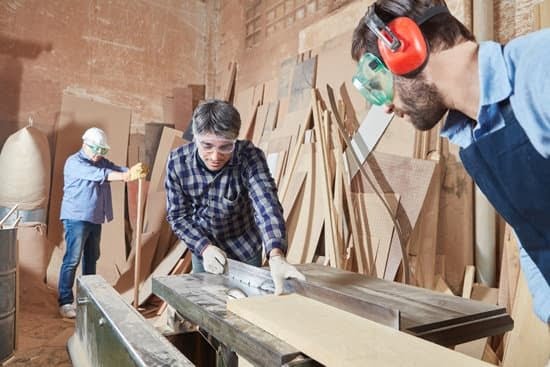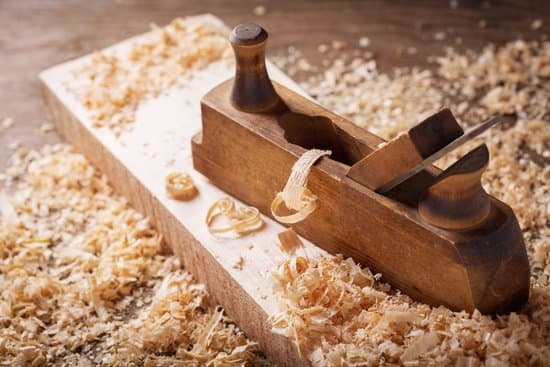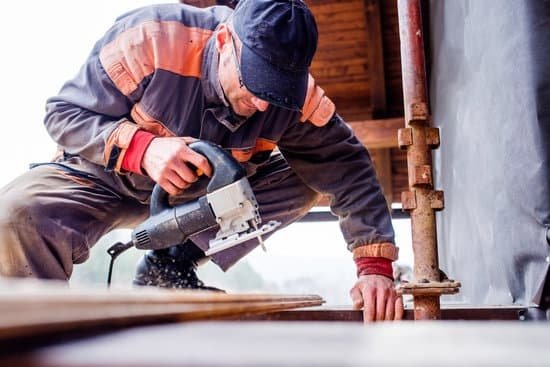Introduction
Coat Tree Woodworking Plans provide detailed instructions for designing and constructing coat trees. The plans typically include materials lists, assembly instructions, and measurements for each component of the project. Coat trees are a great addition to any home; they provide a place to hang coats, jackets, towels, and purses in an organized manner. Coat trees also make it easier to find items in the home as they can be hung close together so that the items are easy to access. Additionally, having a coat tree allows guests to feel welcome when entering the home by providing them with somewhere to hang their own personal items. As such, following well-made plans will ensure a successful build while also providing unique character to any space.
The Benefits of Building a Coat Tree
Building a coat tree is a great project for woodworking hobbyists. Not only does it provide inexpensive storage, but it also can add an eye-catching touch of style to any room in the house. The benefits of building a coat tree are vast and varied. Firstly, if you choose the right materials and build it correctly, it can last for many years to come, making it an economical investment for those wishing to update their home’s decor. Secondly, because you have built the coat tree yourself, you can customize it to fit your own personal taste and preferences. You don’t need to worry about finding one that fits perfectly into your home as you can simply make one that looks exactly how you want it too! Also, by using wooden dowels or even stylish hooks, you can use your coat tree to hang items such as jackets, hats and scarves which helps keep them organized and out of the way. All in all, anyone with basic knowledge of carpentry can easily build a functional and stylish coat tree with just a few tools ” making this project accessible even to novice woodworkers.
Key Factors to Consider When Selecting Your Materials and Tools
When crafting a coat tree, it is important to select materials and tools that are suitable for the project. One of the first key factors to consider is the type of wood used. Different woods provide different levels of thickness and weight, which impact how sturdy the coat rack will be after construction is complete. Additionally, hardwoods tend to be more durable and long-lasting than softwoods. Another important factor is to consider the grain pattern of wood when selecting wood for the coat tree. It is usually easiest to work with wood that features uniform straight grain patterns and minimal knots or blemishes.
In addition to choosing quality materials, it is also important to ensure that you have the correct tools available before beginning your project. Basic power tools like an electric drill, saws (circular saws, hand saws), sanders, chisels, clamps and hammers are essential for any home DIYer working on a wooden coat tree project. Additionally, make sure you have safety accessories such as safety glasses, work gloves, dust masks and ear protection when working with power tools. A measuring tape and level can help ensure accurate cuts and strong joints in your completed product. As you begin your project make sure you are familiar with all safety guidelines for each tool you are using before operating them.
Step-By-Step Instructions On Building Your Own Coat Tree
Creating your own coat tree can be a fun and rewarding project. Here is a collection of tips that can assist you in the process of building a beautiful and functional coat tree for your home:
1. Start by cutting out the two main pieces of the coat tree from your desired wood ” such as cedar, pine, or oak. Use a jigsaw or band saw to make all straight cuts while making sure they are uniform, secure, and smooth to prevent any injuries when using or bumping into the coat tree.
2. Lay out the pieces of wood on the ground in order to get an overview of the final shape before assembling them. Make careful measurements if you need additional support structures between each large piece in order to prevent them from splitting apart due to excessive weight placed on it.
3. Sand each piece until it’s even and smooth before starting assembly since once they’re connected it will be difficult to reach hard-to-get-at spots with sandpaper or other sanding tools . Once all surfaces are fully sanded go ahead and start connecting each piece using screws, dowels and brackets necessary for further stability once everything is put together – glue should also be applied between each piece for added strength.
4. Paint or stain your coat tree according to preference – many prefer painting their projects with two coats followed by two coats of varnish for protection against tears, scratches and dirt accumulation over time – however some prefer staining over painting as it adds an additional layer of beauty without having to worry about dirt so much compared to painted surfaces.
5. Finally applying accessories like old hooks, knobs and other elements is another way to personalize your own custom made coat tree – install these items into place following the instructions provided in order avoid any damage when nailing them into place while making sure they don’t come off too easily after installation has been completed.
Common Challenges and Solutions When Building a Coat Tree
One of the most common challenges people face when building a coat tree is making sure all measurements are precise. Without such precision, the entire project will not fit together correctly or may end up looking sloppy. To combat this problem, measure often and use a level as much as possible. Additionally, ensure that each peg and rail is cut precisely to make assembly easier in the long run.
Another challenge associated with coat tree woodworking plans is sanding effectively. Depending on the material used, sanding can be especially tricky and tedious if it is not done accurately. To avoid having any uneven surfaces or corners, properly wrap sand paper around items like dowels or blocks for extra control when sanding. Be sure to check for splinters along the way so that no slivers poke through the finish later on.
Finally, staining can prove difficult if one does not understand pigments and color mixtures. For a consistent look across pieces of wood being stained at the same time, use pre-mixed stains from a store or experiment with mixing colors in order to match what one wants perfectly. In addition to this, applying an even layer takes some practice so test out staining techniques on scrap pieces beforehand for more experience before committing to larger projects.
Enhancing Your Coat Tree With Unique Finishes and Accessories
Adding unique finishes and accessories to your coat tree can take a basic piece of furniture to a whole new level. Consider some of the ideas below:
• Antique Painted Finish: Give your coat tree an aged look with a unique antique finish. This can be achieved through various techniques like dry brushing, distressing, or crackling.
• Decorative Coat Hooks: Swap out the traditional metal hooks for something more eye catching such as glass, wood, or ceramic knobs in an array of colors or shapes.
• Mirrors: A gorgeous mirror set across the top part of the coat tree can create an inviting entryway to any room, making it look larger and brighter.
• Baskets: Add storage to your coat tree by nailing a few wire baskets along its sides that can store hats and gloves, purses, and other items you may want kept nearby but out of sight.
• Wallpaper Accent: Buy wallpaper with striking patterns or colors and add it to the backside of each coat rack before installing onto the wall; now each person’s hung-on item creates an interesting focal point on that wall.
These easy-to-implement enhancements will take your coat tree from ordinary to extraordinary!
Tips For Effective Sanding and Finishing
When sanding and finishing with coat tree woodworking plans, it is important to take the time to complete the task properly. To ensure success, keep in mind the following tips:
1. Start by using a coarse-grade sandpaper such as 120 grit to remove old finish or surface imperfections. Make sure to sand in the direction of the grain.
2. Once all of the blemishes have been eliminated, switch to a finer grade such as 180 or 220 grit for a smoother finish and fewer scratches. Work slowly and steadily, same as with the coarser paper.
3. If desired, apply a stain that is compatible with your choice of protective coating to give your coat tree added color and protection. Be sure to choose an oil based stain if you plan on applying a polyurethane topcoat afterwards; otherwise, choose a water-based stain so it will not react negatively with any subsequent finishes applied after drying for 24 hours.
4. Once the stain has dried, apply two or three coats of polyurethane or other suitable topcoat finish with light sanding (320 grit) between each coat for improved durability and appearance of your project’s wooden surface. Allow each coat to dry thoroughly before further application and always brush in line with the grain direction while brushing out bubbles and drips as they are encountered during application intervals.
Ideas For Unique Decorative Coat Trees
Decorative coat trees offer a unique way to organize and store coats, bags, umbrellas, scarves and other items. With the right woodworking plans, you can design and build a decorative coat tree that adds character to any room. Choose from many classic designs or come up with a one-of-a-kind design that complements your décor. Laminate several colors of wood together for an eye-catching effect or incorporate nautical themes with rope decorations and white paint. Bamboo poles can be used to create a tropical feel while traditional carved designs can add a feel of nostalgia to any space. Structures in the shape of animals are an adorable way to invite children or guests into a home; simply change up the colors of the wood tones to match your aesthetic. Getting creative with the design is just part of the satisfaction of building a beautiful coat tree from scratch using custom woodworking plans.
Final Thoughts and Safety Tips
When working with wood and power tools, always use the necessary safety equipment including goggles and a respirator. Read all of the instructions on the tools you are using and make sure you are familiar with how they operate before beginning your project. Make sure to check local building codes to determine what is required and follow any applicable laws or regulations when constructing a coat tree. Before staining, sanding, or finishing the project, make sure to test any materials you intend on using in an area that won’t be seen. This will help prevent accidents that could occur due to incompatible chemistries. Finally, have fun crafting your own wooden coat tree!

Hi everyone! I’m a woodworker and blogger, and this is my woodworking blog. In my blog, I share tips and tricks for woodworkers of all skill levels, as well as project ideas that you can try yourself.





